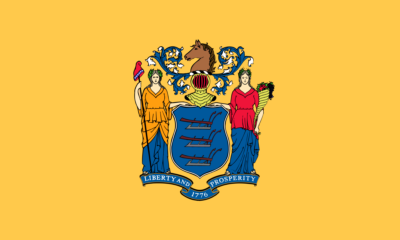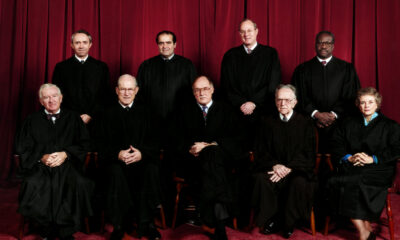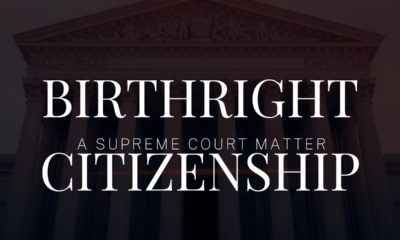Constitution
Human Life Amendment – proposals and effects
Thirteen Human Life Amendment proposals came to Congress after Roe v. Wade. Now it’s time to take a second look at them.
Few people remember that, for eleven years after the Roe decision, Congress saw thirteen Human Life Amendment proposals. Congress voted on only one of these, and, of course, voted it down. Now, as the anniversary of the Dobbs decision approaches, it’s time to take a second look. In fact one will readily recognize that Dobbs gave us the effect of one of those proposals already. That shows us how far-ranging these amendments would have been in actual effect.
The abortion decisions
In 1973, the Supreme Court found a Constitutional “right” to abortion in two cases it decided that term. Everyone remembers the first: Roe v. Wade, 410 U.S. 113 (1973). They have forgotten another case, Doe v. Bolton, 410 U.S. 179 (1973). The Court handed down decisions in those two cases on the same day – January 22, 1973. If anything, the Doe case had the greater consequence. Roe merely made it unconstitutional to try a woman criminally for having an abortion. Doe made it unconstitutional to regulate abortion in any manner. The case involved a Georgia statute that required a woman seeking abortion to obtain:
- The opinion of a physician that an abortion was medically necessary to preserve the life and health of the mother, or that the baby was likely to be born with a “serious” defect, or that her pregnancy resulted from a criminal act,
- Second and third opinions of other physicians confirming that of the performing physician, and
- The approval of a special committee of medical staff at the admitting hospital.
Even that wasn’t good enough for the Blackmun Court at the time. So those arguing for the “exceptions,” had those exceptions in force under the Georgia law. The Doe case came close to making abortion available for any reason or no reason. Without a doubt the United States, for forty-nine years, had the most permissive abortion regimen in the civilized world.
Dobbs changes all that
In contrast, Dobbs v. Jackson Women’s Health Organization, 597 U.S. ____ (2022), holds that the Constitution does not guarantee any right to abortion. With that, States are free to regulate or forbid abortion, or not, as their legislatures and courts see fit. States have responded with a dizzying variety of laws. None of this has made more than a slight dent in abortion in the United States today. Nor did we expect it to when the decision came down. Women can and do travel to States with more permissive abortion regimes. “Abortion tourism” makes abortion available to any woman with can drive, or afford a bus or rail or plane ticket. This map from NBC News will give the current state of abortion law, so long as NBC will update it.
Last term, the Supreme Court denied review of a case involving the Reproductive Privacy Act of 2019 in Rhode Island. So the Supreme Court, though it found no right to abortion, has not yet found a right to life, either. That’s why it’s time to consider a Human Life Amendment, to spell out that right to life.
Congress and the States shouldn’t have to amend the Constitution to preserve human life. That was the understanding for most of American history, as Justice Sam Alito noted in the Dobbs opinion. But the attitude of Justice Brett Kavanaugh is likely to prevail: that elected representatives should settle this issue. Only with a Human Life Amendment can they do that.
Previous attempts at a Human Life Amendment
A National Committee for a Human Life Amendment exists – or at least existed in 2004. They have maintained the text of various Human Life Amendment proposals up to that year.
Various Members of Congress have proposed no fewer than thirteen Human Life Amendment candidates from 1973 to 1983. This list includes these proposals that would have achieved the same effect as Dobbs. The Hatch (1981), Hatch-Eagleton (1983), Noonan (1975), Scott (1975), and Whitehurst (1973) proposals fall into this category. The part about “federal jurisdiction” refers to the jurisdiction of the federal government over territories and “Clause 17 places.” (That last includes the District of Columbia and all “forts, magazines, arsenals, dockyards, and other needful buildings” on Federal land.)
All the other eight proposals actually forbid abortion. Two explicitly allow a life-of-the-mother exception. The rest do not – but on some proposals like the brief Paramount proposal of 1979), one could make a reasonable case for that exception to a sympathetic Court.
The best Human Life Amendment
Of all the proposals advanced thus far, the Burke Human Life Amendment shows the greatest promise.
It reads:
SECTION 1. With respect to the right to life, the word “person,” as used in this article and in the fifth and fourteenth articles of amendment to the Constitution of the United States, applies to all human beings, including their unborn offspring at every stage of their biological development, irrespective of age, health, function, or condition of dependency.
SECTION 2. No abortion shall be performed by any person except under and in conformance with law permitting an abortion to be performed only in an emergency when a reasonable medical certainty exists that continuation of pregnancy will cause the death of the mother and requiring that person to make every reasonable effort, in keeping with good medical practice, to preserve the life of her unborn offspring.
SECTION 3. Congress and the several States shall have power to enforce this article by appropriate legislation within their respective jurisdictions.
By defining what a person is, Section 1 provides some much-needed clarification. It might cause an argument that a legal entity does not enjoy the protections of freedom of speech, or of liberty or property, that a natural person enjoys. But because any legal entity has a person or persons as owner(s), that strikes us as a distinctly minor hazard.
Section 2 has the real meat. It sets forth the life-of-the-mother exception and requires a medical provider to make a good-faith effort to save the baby’s life anyway. Cases of intrauterine surgery demonstrate that such efforts are not only possible, but could easily command the respect and admiration of doctors of good heart.
Section 3 is an attempt to preserve federalism by asking a State to enforce the amendment within its own jurisdiction. Like the five “back to the States” proposals, this section seems to refer to Clause 17 places. Because this amendment is a prohibition against “persons,” and not “the United States or any State,” this might be appropriate. But perhaps “Congress shall have the power to enforce this article by appropriate legislation” would fit better.
How likely would it pass?
The Burke Human Life Amendment could not pass immediately. As few as thirteen States could object, and the NBC “Abortion Map” shows twenty-six likely to balk. And these are only the current “Abortion Tourist Traps” or States forming contiguous “Abortion Blocs.” Add in the States that do not restrict abortion as completely as Burke would, and we have a problem.
But the problem might not last. Already birth rates in the United States as a whole have fallen below replacement level. A population decline might result – and many who die will be the childless. Those who would want a Human Life Amendment would have most of the children – possibly all of them. Within a generation, pro-life voters would effectively inherit their States and elect pro-life legislatures, Representatives, and Senators. With these they could have their Human Life Amendment proposed, then ratified, in relatively short order.
They might also pass other Amendments that would make the Constitution a stronger guarantee of life, liberty and property. CNAV will explore these in later installments.
Terry A. Hurlbut has been a student of politics, philosophy, and science for more than 35 years. He is a graduate of Yale College and has served as a physician-level laboratory administrator in a 250-bed community hospital. He also is a serious student of the Bible, is conversant in its two primary original languages, and has followed the creation-science movement closely since 1993.
-

 Executive2 days ago
Executive2 days agoThe Last Supper: New York’s Socialist Feast
-

 Civilization3 days ago
Civilization3 days agoIvory Tower Thinking and Narcotics Boats
-

 Civilization2 days ago
Civilization2 days agoYoo Hoo, VP Vance—Your Character is Showing!
-

 Executive5 days ago
Executive5 days agoWaste of the Day: Shockingly, Inmate Phone Calls Lead to More Criminal Activity
-

 Executive4 days ago
Executive4 days agoWaste of the Day: Throwback Thursday – Funding Fat-Filled Butter
-

 Civilization4 days ago
Civilization4 days agoGeneral Misconduct: There Is an ‘I’ in Milley
-

 Civilization2 days ago
Civilization2 days agoFacing Facts & Rolling Back Mythologies: The New National Security Strategy
-

 Executive4 days ago
Executive4 days agoWH Ignores Demands From Pro Life Lobby To Fire FDA Commissioner











The first thing people need to keep in mind the Federal Government has no authority to regulate abortion. Our Federal Government is limited in what it is allowed to do. If we went back to following the US Constitution and limited government a lot of problems would disappear.
The second thing people need to think about is that there are only two justification for an abortion. The first is an Ectopic Pregnancy. Both the mother and child will end up dead. Real doctors would try to determine a way to move the child into the Uterus. The second justification is the child is dead in the womb. And a miscarriage is NOT an abortion. Also, learn about the side-effects of abortions – both physical and mental.
The third thing people need to learn is why organizations like Planned Parenthood were created. It is not to help women but to kill of those the “Left” consider undesirable. Look at what has happened to the Black population over the last 100 or so years and how they have been targeted.
And a fourth thing to consider is the underlying moral issues. The whole concept of abortion on demand is to eliminate responsibility for ones behaviors and actions. Look at the promotion of “if it feels go do it” mentality and “it is not your responsibility” mentality.
Underlying all of the problems we have today and that every society face is are moral issues. Always remember to look behind the proverbial curtain to the hidden agenda.